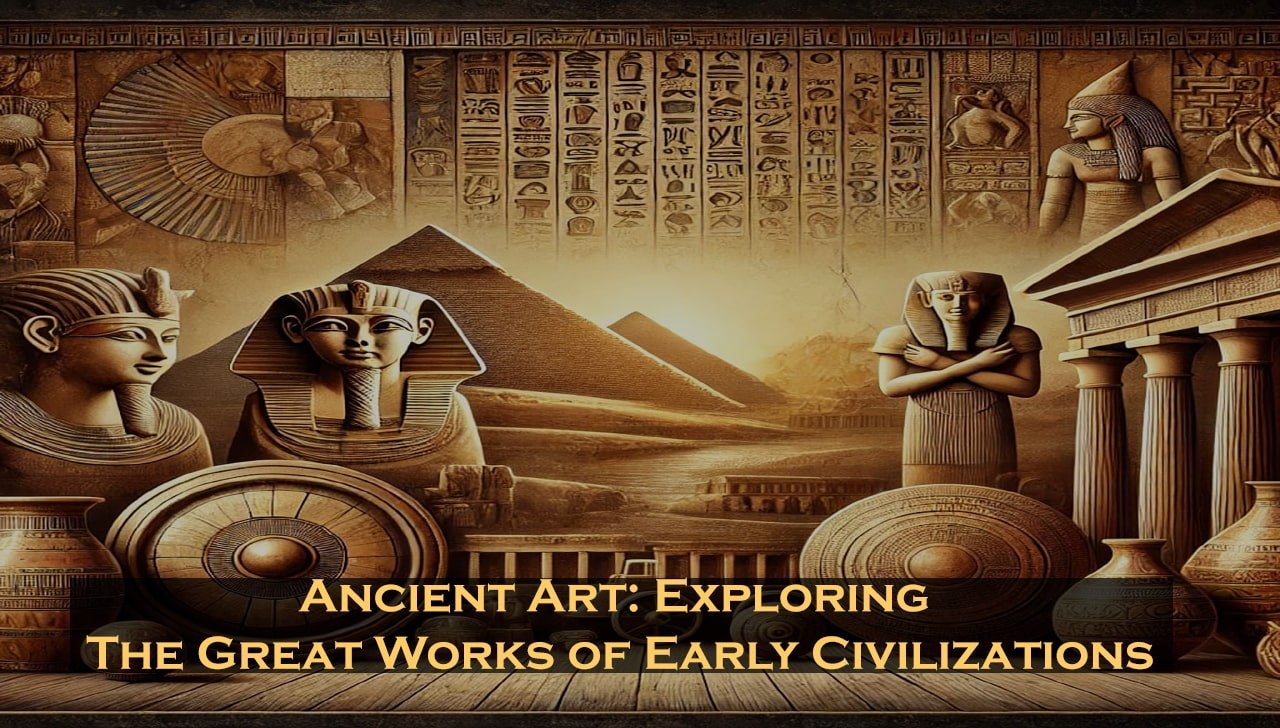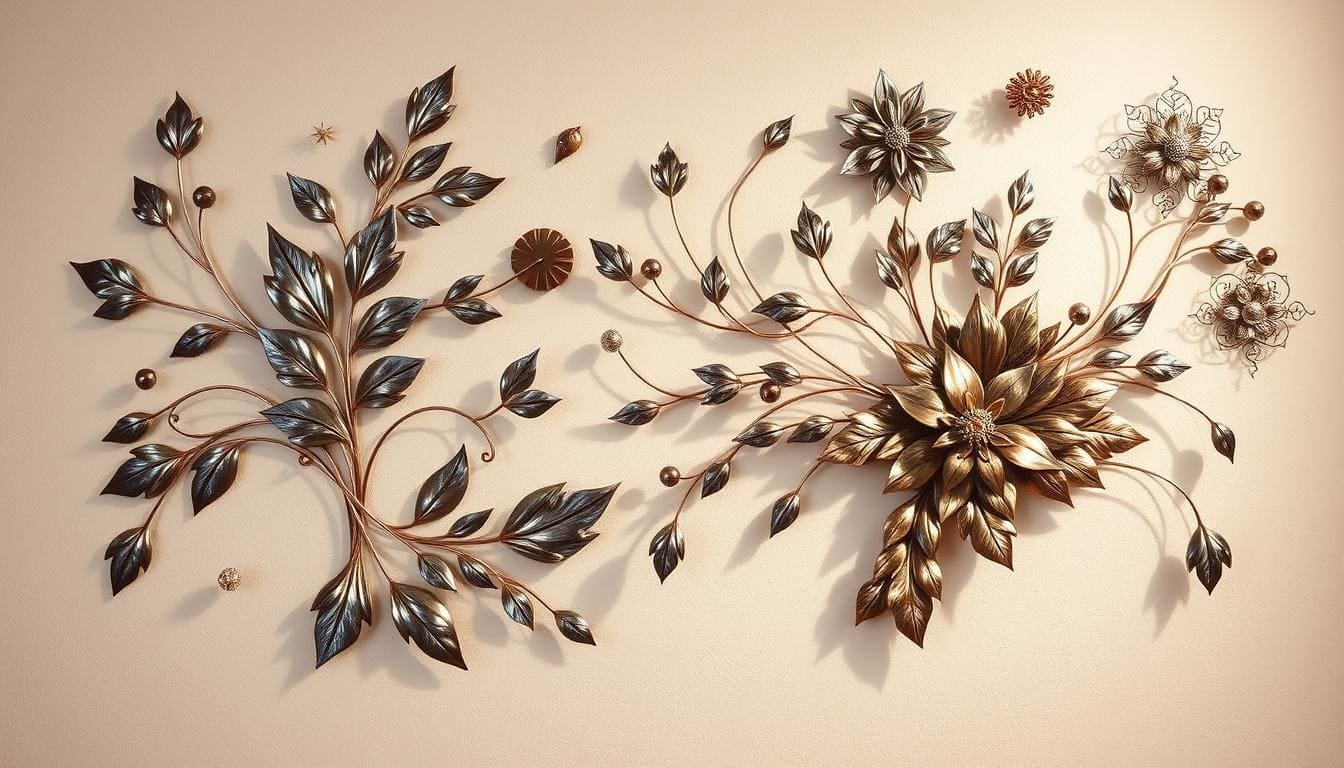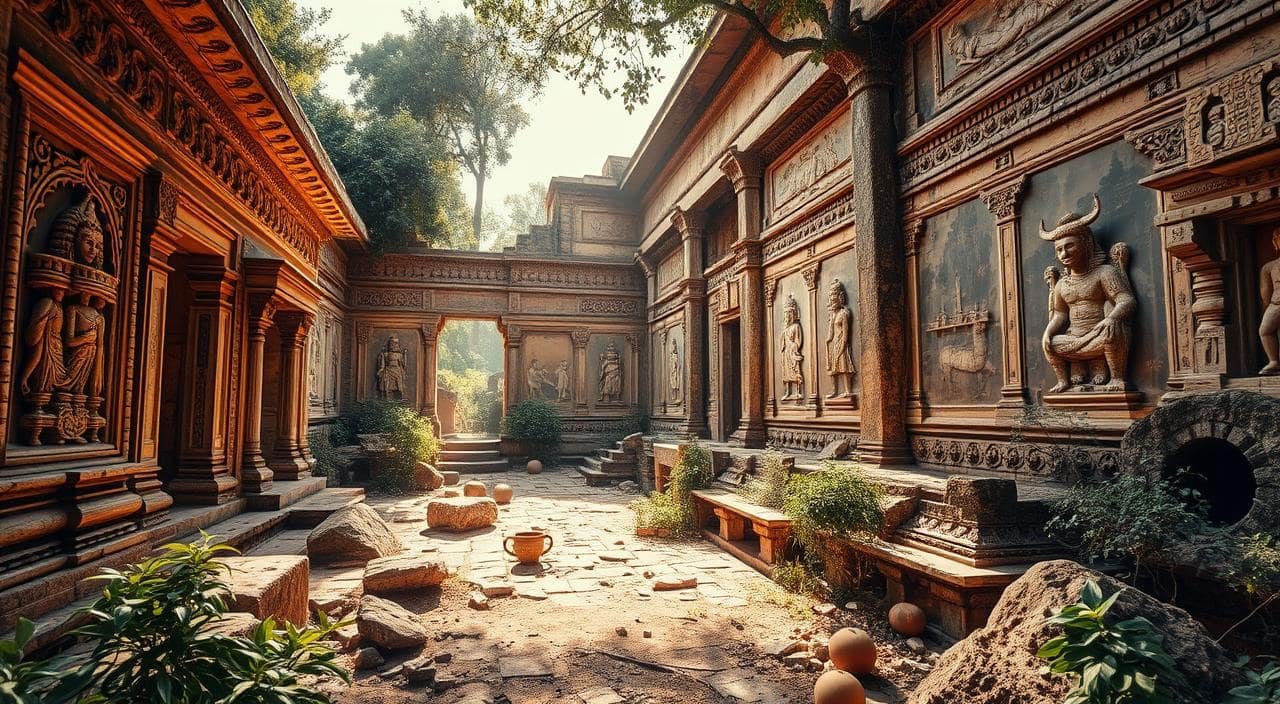From the beginning of time, art has played a key role in human development. It has provided insight into how societies lived, what they held dear, and their way of life throughout history. Ancient art includes all the art forms of cultures around the globe. Imagine the centuries when modern technology or writing did not exist. Although one may ask, is there such a thing as ancient art? Ancient art can be pottery, sculpture, buildings, and even tapestries. It is the legacy that the ancient people left of themselves.
The art made by the cultures in Mesopotamia, Egypt, India, China, Greece and Rome is referred to as ancient art. And it still captures our attention. They were told through stories, the spirituality of the people, and the glory of the rulers of those empires and their gods. Let us look deeper into the amazing world of ancient art and its history and how it has been carried over to modern times.
Ancient Art: Its Beginnings And Peep Into Its History
The origin of ancient art can be traced back to early human societies, which expressed themselves through primitive means such as cave paintings and carvings. With the beginning of recorded history there developed a broader range of classically advanced art forms. The ancient civilizations created art often in regard to religion, politics or children’s daily lives, thus revealing the culture of those peoples.
Ancient people sometimes produced artifacts of everyday use – religious, statesman or merely cultural, as is the case today. Modern art usually intends one or more complete, subjugated or abstract opinions of the creator. They gratified the society with religious images, pictures of the kings and sculptures of significant events during their reigns. Such works were often intended to portray gods, victors in battles or other prominent people in history.
Mesopotamia: The Cradle of Civilization and The Dawn of Artistic Achievement
The civilization of Mesopotamia, which is most commonly known as the ‘land between rivers,’ emerged in what is Iraq now. Mesopotamian civilization is one of the most ancient known civilizations, and through its arts, mankind is able to comprehend a lot of early human cultures. The Mesopotamian peoples were particularly gifted in the making of large scale buildings and monuments, writing detailed and beautiful sculptures, as well as crafting exquisite pottery. They were also among the first people to develop any form of written language, which is portrayed in the evolution of the cuneiform.
Summer is regarded as one of the world’s oldest civilizations; the Sumerians in Mesopotamia created some of the greatest ancient art. The Standard of Ur, a rectangular wooden box ornamented in lapis lazuli and shells, is among the best known of such pieces. Artwork on this box presents battle and feast, thus a marriage of both martial and kingly glory. In and of itself, this artifact speaks eloquently of the Sumerians’ expertise in metallurgy and lapidary arts.
With the growth of the region, art was developed further under the Babylonians and Assyrians. The Babylonians, famous for their use of clay bricks, designed elaborately decorated palaces lined with enameled tiles, as well as murals that depicted different scenes from the life of men and the gods. An example of the artistic importance of this culture is found in the Ishtar Gate, which served as one of the entrances to Babylon and carried pictures of animals and various gods.
The succeeding Assyrians left their mark with siege scenes carved into stone, impressive murals, and elaborately decorated panels that embellished the walls of their kings’ palaces. Often, these works commemorated and lauded battles aggrandizing the exploits of kings. Skilled stone craftsmen, Assyrian artists customarily created lifelike sculptures of their gods and Kings to impress and yearn for divine blessings and power.
Ancient Egypt: Art in the Face of Death
Ancient Egyptian art is one of the most recognizable of all ancient art forms. The ancient Egyptians did finish off art work with a certain finality as their religion was based on life after death. Everything was created with the idea of not merely enhancing the aesthetics of the living but also performing the protection role for the journey across the living.
A prominent feature of art from Egypt is its heavy stylization and symbolism. In Egyptian paintings and sculptures, the figures, whether gods, pharaohs or animals, were sculptured formally and rigidly, with idealized proportions that placed the walls in a perfect and timeless image. Egyptian artists employed the hieratic scale to show importance, with the larger figures depicting higher rank.
The Sphinx, the Pyramids of Giza and the tomb of Tutankhamun are among the most notable monuments of ancient Egyptian art and architecture. These pieces were not just great works of art but also had great religious meaning as they were intended to keep the soul of the pharaoh for all times. A number of magnificent examples of Egyptian art dwell in the treasures found in the tomb of his son, king Tut, which include the king’s golden mask.
Greece and Rome: Classical Influence and Legacy
The zenith of the classical period and the sunset of ancient Roman civilization is epitomized by and largely hinges on Greek and Roman art. Greek art, especially sculpture and pottery, focused on the human form at its best. Greeks were the earliest to make attempts towards realism in art, and their sculptures of gods, athletes and philosophers were balanced, well-proportioned and posed naturally.
The Parthenon in Athens, along with statues of Zeus and Athena, are the finest examples of ancient Greek art. The Greeks were also experts in ceramics, employing red-figure and black-figure techniques to embellish vases with representations of myths and everyday scenes.
Roman art owes a lot to the traditions of the Greeks, but it was more often than not politically and historically oriented. The ancient Romans were known for their portrait paintings, often with a great degree of realism, as seen in the busts of Roman emperors. And Roman Empire also contains breathtaking monuments as well, including the Colosseum and Pantheon, which for many years contributed to the development of various architectural styles.
Roman mosaics, frescoes, and sculptures frequently represented episodes related to magnificence, wars, and the overbed of empire, which communicates kudos and strength of the Roman Empire. The use of concrete enabled Rome to conventional dry-rolling big models and very complicated structures, and some of these models can be seen today.
The Legacy of Ancient Art on Contemporary Society
To underestimate the contribution of ancient art is to make an error. From the bold and moving sculptures of Ancient Greece to the great architectural structures in Rome, those elements and rules of the ancient art of the accurate balance between proportions and beauty are ideal and ever-recurring in contemporary art, architecture and visual arts.
Museums have collected these artifacts of their past and made it easier for contemporary people to appreciate the imagination and work that their ancestors did. Therefore, whether it is the safeguarding of ancient Egyptian tombs or the repairing of Roman temples, the remains of the past civilizations provide significant inspiration as it is a constant reminder of art that humans have always practiced.
Conclusion
Ancient art forms have a fascinating history and a dazzling feature and these two can assist us to understand more in the present world. It links with the peoples of the past who built and shaped it, and we see who they were, how they lived, and how they viewed the world. From the delicate decorations of the Mesopotamians to the towering effigies of the ancient Egyptians, people remain positively intrigued. Such works of art are learning materials as one will not only understand the development of art but appreciate the evolution of humanity through the ages.









